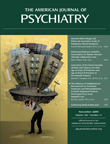Perinatal Akathisia: Implications for Pharmacokinetic Changes During Pregnancy
To the editor: Although physiological changes during pregnancy significantly affect drug pharmacokinetics, no evidence-based heuristic exists for peripartum dosing (1) . To illustrate this concept, we present the case of a patient with Tourette’s syndrome who experienced severe postpartum akathisia, ameliorated by medication dose reduction.
“Ms. HP” was a 29-year-old 3-weeks-postpartum Indian female (gravida 2 para 2), who presented with acute anxiety to the emergency room. Although she had experienced vocal and motor tics since childhood, she had never been treated for these symptoms. Her symptoms became more severe during her second pregnancy. Self-inflicted hitting and face scratching led to a detached retina in the second month of this pregnancy. During the fifth gestational month, her obstetrician started her on pimozide, 4 mg daily. She then reported a prompt and marked reduction in her symptoms, stating that the tics were “almost completely gone,” and she tolerated the medication without side effects throughout the pregnancy.
Ms. HP had an uncomplicated delivery of a healthy female infant. Within 1 week, she reported low energy and restlessness at night, which progressed to near-constant symptoms in the second postpartum week. She described a “weird feeling” in her stomach and legs and that she “had to walk.” In her third postpartum week, she presented to the emergency room. She paced the unit hallways and was unable to remain still.
The patient was emergently treated with lorazepam and benztropine, and her acute symptoms subsided. Upon discharge, pimozide was reduced to 2 mg daily, and follow-up evaluation at a community psychiatry clinic occurred within 1 week postdischarge. At that time, her akathisia had fully remitted. Her Tourette"s syndrome symptoms were present but remained diminished. At 2 months postpartum, her tics were under good control and she remained free of extrapyramidal symptoms.
Several physiological factors could explain this patient’s postpartum akathisia. Pimozide is metabolized by hepatic cytochrome P450 3A and 2D6 pathways. It has been shown that drug metabolism by these isoenzymes increases during pregnancy (2) . Similarly, there is an approximate increase of 5 to 8 liters in total body water during pregnancy, in addition to 30%–50% of plasma volume (1 , 3) . This may result in a higher volume of drug distribution. During pregnancy, a decreased concentration of albumin may lead to decreased peak serum concentrations of protein-bound drugs, such as pimozide (4) .
Other studies have suggested that higher drug doses may be needed to compensate for these changes during late pregnancy, with subsequent postpartum dose tapering as liver metabolism and fluid volumes return to baseline levels (5) .
The present case adds to a limited clinical database and highlights the need for a broader evidence base regarding pharmacokinetic changes during pregnancy and their effects on drug dosing.
1. Cono J, Cragan JD, Jamieson DJ, Rasmussen SA: Prophylaxis and treatment of pregnant women for emerging infections and bioterrorism emergencies. Emerg Infect Dis 2006; 12:1631–1637Google Scholar
2. Anderson GD: Pregnancy-induced changes in pharmacokinetics: a mechanistic-based approach. Clin Pharmacokinet. 2005; 44:989–1008Google Scholar
3. Little BB: Pharmacokinetics during pregnancy: evidence-based maternal dose formulation. Obstet Gynecol 1999; 93:858–868Google Scholar
4. Dawes M, Chowienczyk PJ: Drugs in pregnancy, pharmacokinetics in pregnancy: best practice and research. Clin Obstetr Gynaecology 2001; 15:819–826Google Scholar
5. Sit DK, Perel JM, Helsel JC, Wisner KL: Changes in antidepressant metabolism and dosing across pregnancy and early postpartum. J Clin Psychiatry 2008; 69:652–658Google Scholar



